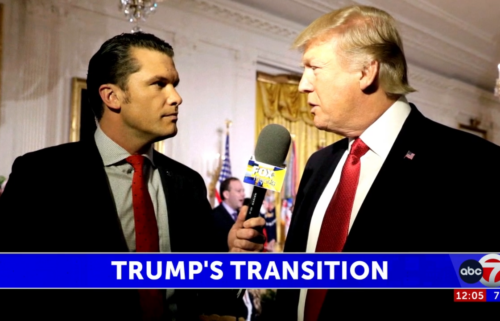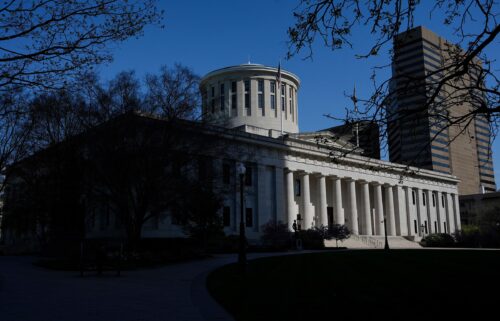Trump’s trade challenge: Closing China and Mexico-Canada deals by the end of December

President Donald Trump is approaching the end of another year without closing on either of the two big trade priorities he campaigned on in 2016 — a comprehensive deal with China and a renegotiated North American Free Trade Agreement.
With the 2020 campaign around the corner, the President himself is casting doubt on whether he needs to make a deal with China and left it an open question whether the US will move ahead with additional tariffs in less than two weeks.
“Right now, we’re moving along, we’re not discussing that,” he told reporters on Thursday at the White House.
Two days earlier, on Tuesday, Trump told reporters in London, “I have no deadline.”
He added: “In some ways I like the idea of waiting until after the election for the China deal. But they want to make a deal, and we’ll see whether or not the deal’s going to be right, it’s got to be right.”
Close US-China trade watchers didn’t view the President’s comments as a breakdown in negotiations but as an effort by Trump to maximize pressure on Chinese leader Xi Jinping to win as many concessions as possible by December 15, when punitive US tariffs on Chinese-made consumer products are scheduled to kick in.
Despite numerous contradictory signals, including the President’s, negotiators appear to be “moving quickly” to resolve issues in the text of the agreement, according to a person familiar with the process.
“It is apparent, at least to me, that they’re not far away from an agreement,” this person said. “They are moving in a relatively brisk manner towards a phase one deal.”
Treasury Secretary Steven Mnuchin on Thursday told reporters that US and Chinese negotiators are continuing to have “very productive talks” to reach an initial phase one deal ahead of the tariff deadline.
“Like the President said we’re going to get the right deal and we’re not going to be confused for an arbitrary deadline,” said Mnuchin following a House hearing.
He added, “Talks are progressing.”
Among the stumbling blocks is whether the Trump administration will wipe the upcoming December tariffs off the books and roll back other penalties imposed this September. The Chinese are hoping for zero tariffs as a part of a trade deal to point to as a victory, while the Trump administration would like to keep at least some tariffs in place as leverage.
“Trump would not escalate by imposing the December 15 tariff on additional imports,” said Gary Hufbauer, a senior fellow at the Peterson Institute for International Economics. “It would be a dampener on the stock market and the strong economy that he wants. It’s contrary to his more basic goal — to get reelected.”
Mnuchin didn’t answer when asked directly if the Trump administration was planning to roll back billions of dollars in tariffs that have been imposed this year.
But the pinch point with China comes just as the President’s top trade official, Robert Lighthizer, is also working to get Congress to ratify the US-Mexico-Canada trade agreement before lawmakers adjourn for its holiday recess — a negotiation that’s playing out against the backdrop of the Democratic impeachment inquiry and a potential budget standoff later this month.
On Monday, House Speaker Nancy Pelosi said Democrats are “hoping to come near to conclusion” on a deal with the administration on Trump’s revised NAFTA. She has previously said she wants to hold a vote on the trade pact before the end of the year.
The chairman of the Ways and Means Committee, Democrat Richard Neal of Massachusetts, said on Tuesday that it’s “possible” for lawmakers to get a deal on the trade pact this month as he was leaving Pelosi’s office with at least three other House chairmen.
Trump has complained that Pelosi is holding up his signature trade deal with Mexico and Canada.
“She has to put it out for a vote,” Trump told reporters on Wednesday. “She doesn’t have to talk to anybody. She doesn’t have to talk to any of her Democrats, because they’ll approve it and their constituents want it approved very badly. That’s where we are. We’ve made a lot of deals.”
Former trade negotiators warned of the difficulty in reaching a final agreement with Beijing as teams wrangle over important conditions in that deal — including how much US agricultural product China will buy, and when.
“Things may drag on for quite a while yet,” said Daniel Pearson, a senior trade fellow at the conservative group Americans for Prosperity. “And not because the President suggested he could wait until after the election, but because they asked for things that are really hard for the Chinese to do.”
Trump himself has been a wildcard in these negotiations, proving willing to escalate tariffs to levels that have hurt American consumers over his increasing frustration with the pace of negotiations — though earlier this week White House counselor Kellyanne Conway suggested to reporters that a deal was being “papered,” suggesting a document is in the works.
“We need to see something on paper, otherwise nobody has any idea what it means,” said the person familiar with the talks.
Without that, some say that such verbal commitments as the ones that were made following a dinner between Trump and Xi in Buenos Aires, Argentina, last December, and then again in Osaka, Japan, this past summer will once again quickly fall apart.
“We have seen this movie before,” said Wendy Cutler, a managing director for the Asia Society and a former diplomat and negotiator for the Office of the US Trade Representative under President Barack Obama. “This negotiation notoriously appears to be within reach, unable to go the last mile.”




